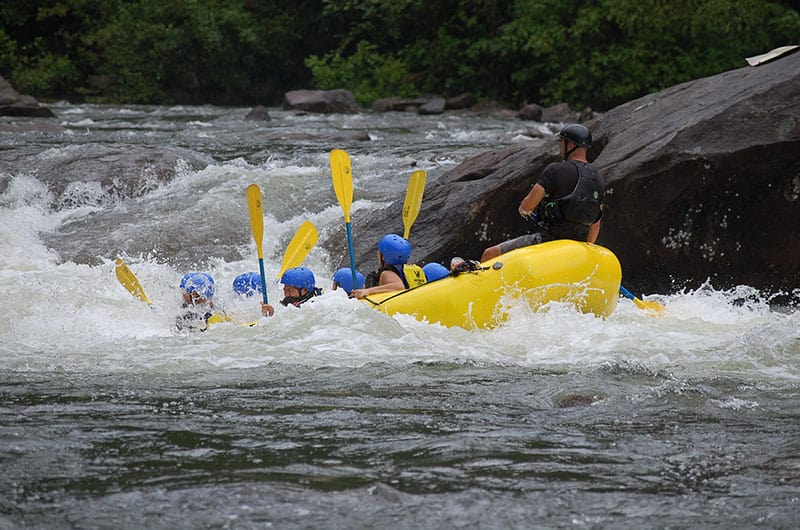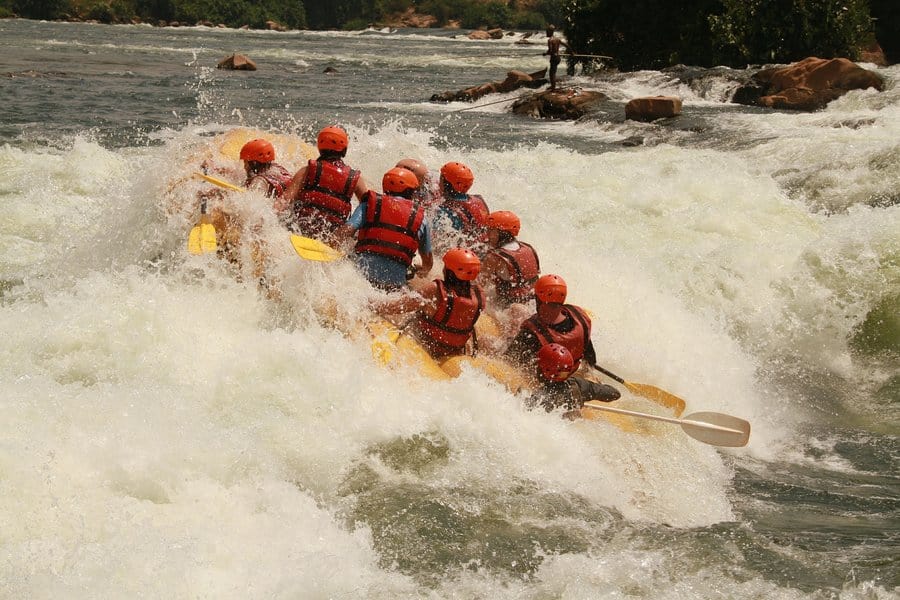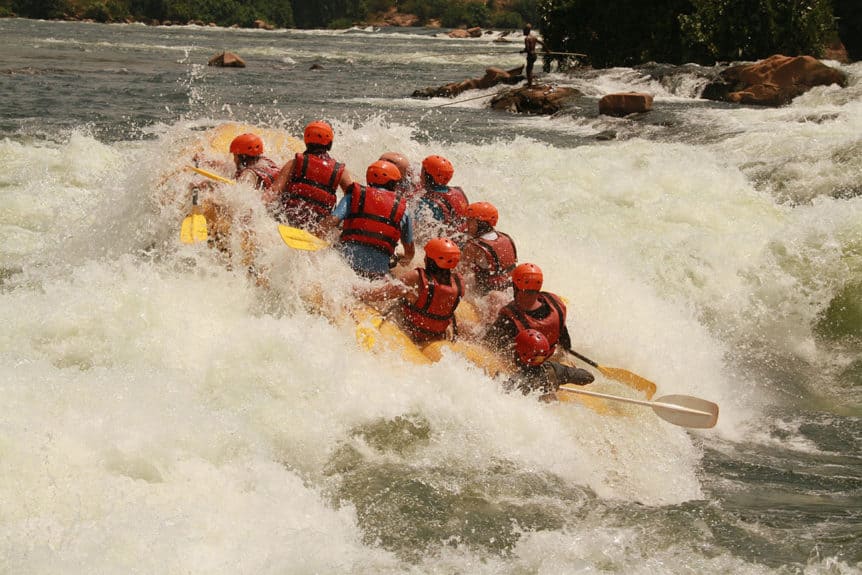
White water rafting in Costa Rica offers an unbeatable blend of excitement, natural beauty, and adventure. With fast-moving rivers, stunning landscapes, and abundant wildlife, Costa Rica remains a top destination for rafters of all levels. Whether you’re a seasoned pro or a first-timer, the thrill of navigating rapids while surrounded by lush rainforests, waterfalls, and unique fauna is an experience unlike any other.
In this updated guide, we dive into the top Costa Rican rivers for white water rafting, highlight seasonal considerations, and provide essential tips and gear recommendations. Let’s explore!
The 4 Best Spots for White Water Rafting in Costa Rica

1. Sarapiquí River
The Sarapiquí River is perfect for those seeking a relaxed yet scenic rafting experience. Generally offering Class II and mild Class III rapids, it’s ideal for families, beginners, and nature lovers.
A typical tour starts with an early-morning pickup from your hotel in San José. After enjoying a hearty Costa Rican breakfast featuring gallo pinto, you’ll pass by the beautiful La Paz waterfall and verdant coffee plantations on the way to the river. Once at Río Sarapiquí, you’ll be briefed on safety protocols before setting off. Expect to float past lush rainforests and farmland, with opportunities to spot local wildlife and enjoy a picnic lunch along the riverbank near the protected La Selva Biological Reserve.
2. Pacuare River
The Pacuare River is widely recognized as one of the most beautiful white water rafting destinations in the world. With Class III and IV rapids, this river offers an adrenaline-filled adventure combined with breathtaking scenery.
After a similar early pickup and traditional Costa Rican breakfast, your journey will take you 16 miles deep into the heart of the rainforest. As you navigate gorges, waterfalls, serene pools, and pounding rapids like Upper and Lower Huacas and Cimarron, you’ll experience one of Costa Rica’s most pristine primary rainforests. Midway, you’ll stop at an operations center where you can change, shower, and enjoy a refreshing lunch before heading back to San José with unforgettable memories and stunning photos.
3. Reventazón River
The Reventazón River is a favorite for experienced rafters due to its challenging Class III and IV rapids. Known for its fast and thrilling 10-mile stretch of rapids, this river promises a pulse-pounding adventure.
The journey from San José takes you through the scenic Braulio Carrillo National Park and past waterfalls along the Continental Divide. Before launching your raft, you’ll have a light breakfast and a final chance to prepare. As you navigate the dam-controlled rapids, keep an eye out for toucans, kingfishers, herons, tanagers, iguanas, and even the striking “Jesus Christ” lizards. At the end of the trip, you’ll have access to shower facilities and a photo gallery of your adventure before returning to your hotel.
4. Pasqua River
For the adrenaline junkies and experienced rafters, the Pasqua River offers a Class IV challenge, especially during the rainy season (September–October). Not only does it feature intense rapids, but its raw natural beauty makes it an unforgettable ride.
Starting with an early 6 a.m. pickup from San José, your day begins with the traditional gallo pinto breakfast. Once at the drop-off point, you’ll prepare for about 12 demanding Class IV rapids. As with other rafting experiences, an operations center at the end provides shower facilities, a meal, and photo opportunities before you’re transported back to the city.
Understanding Rafting Difficulty Levels
White water rafting difficulty is measured by the International Scale of River Difficulty:
- Class I: Easy – Slow-moving water with small ripples; ideal for beginners and families.
- Class II: Novice – Straightforward rapids with clear channels and gentle waves.
- Class III: Intermediate – Rapids with strong currents and some technical challenges.
- Class IV: Advanced – Intense rapids with larger waves and the need for precise maneuvering.
- Class V: Expert – Extremely challenging, with violent turbulence and complex navigation.
- Class VI: Extreme – Dangerous and unrunnable; not recommended for rafting.
Choosing the appropriate difficulty level based on your skills and the river conditions is key to a safe and enjoyable adventure.
Essential Gear and What to Bring
When preparing for a rafting trip, keep your packing list simple:
- Clothing: A swimsuit and a quick-dry t-shirt. Although many tours provide a “dry bag” for your valuables, bringing quick-dry clothing can enhance your comfort.
- Footwear: Water shoes or tevas that securely cover your toes and won’t slip off.
- Accessories: Sunglasses and secure headwear (such as Croakies) to keep your gear in place.
- Sun Protection: Apply sunscreen before you set off.
- Extras: Bring a towel and a change of dry clothes for when the trip is over. Some cash is also useful for tipping your guide.
Many rafting companies provide storage for your dry clothes and sometimes offer showers and photo packages at their operations centers.
Final Thoughts
Rafting in Costa Rica is a seasonal adventure. The peak rafting season from June to November coincides with the rainy season when the rivers are at their most exhilarating. If you’re planning a trip during January or February, keep in mind that lower water levels may result in a less intense experience.
For beginners or those seeking a scenic float, the Sarapiquí and Pacuare rivers are excellent choices. If you’re looking for a heart-pounding challenge and have solid Class IV experience, consider the Reventazón or Pasqua rivers. Also, note that most rafting tours start and end in San José, often requiring an overnight stay, so plan accordingly.
Whether you rent a car and meet your guides at the drop-off point or join a full-service tour, white water rafting in Costa Rica promises a memorable adventure in one of the world’s most beautiful natural settings.

